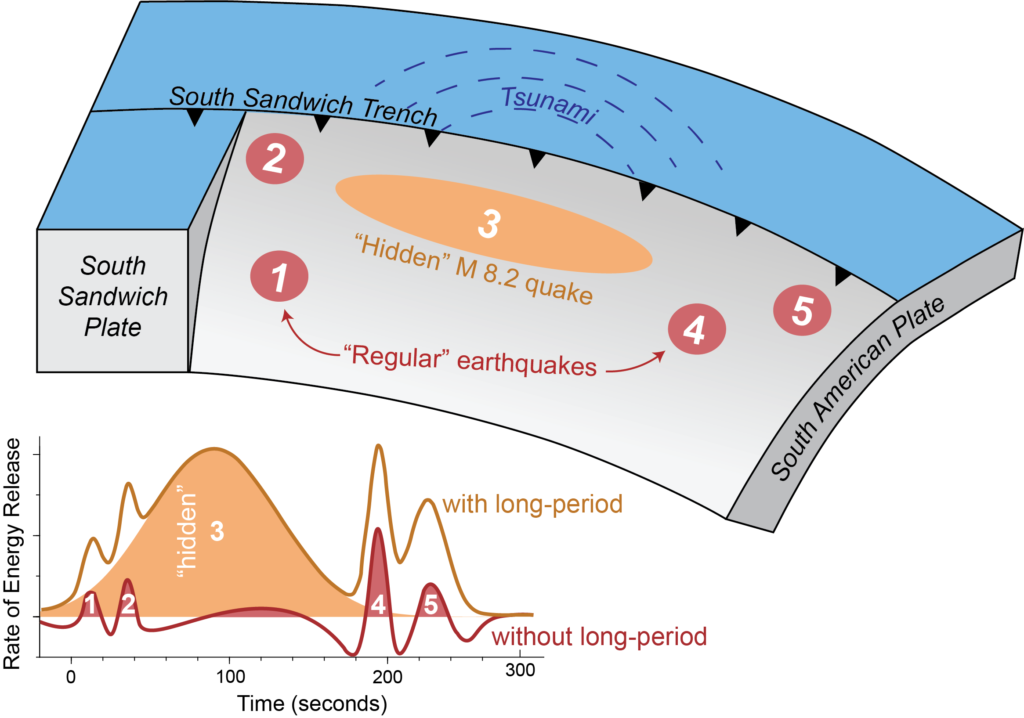Last year in August, a surprise tsunami in the South Atlantic Ocean mushroomed to distances over 10,000 kilometers (more than 6,000 miles) away, rippling through the North Atlantic, the Pacific, and the Indian Oceans.
It was the first time a tsunami had been recorded in three different oceans since the 2004 Indian Ocean earthquake, and scientists have only just now figured out how the waves were triggered.
The epicenter of the August earthquake was measured 47 kilometers (about 30 miles) below the ocean floor, which is much too deep to initiate a significant tsunami, even one with relatively small waves between 15 and 75 centimeters tall (6 to 30 inches).
As it turns out, however, this tsunami wasn't just the product of a single 7.5-magnitude earthquake. A fresh look at the seismological data suggests it was actually a series of five sub-quakes, and in their midst, was hiding a much larger and shallower rumble that was probably what set loose the global tsunami.
This 'invisible' third quake struck just 15 kilometers below the Earth's surface at a magnitude of 8.2. Yet in the crowd of quakes, our monitoring systems completely missed it.
"The third event is special because it was huge, and it was silent," explains seismologist Zhe Jia from the California Institute of Technology.
"In the data we normally look at [for earthquake monitoring], it was almost invisible."
Cutting up the seismological data into longer periods of 500 seconds, Jia and his colleagues were able to reveal the presence of a shallow and slow earthquake not seen before.
Between clusters of other regular ruptures, they found a 3-minute rumble that ruptured a 200-kilometer section of the plate interface. Altogether, this one event made up over 70 percent of the total seismic moment recorded.
"Thus," the authors conclude, "the South Sandwich Island earthquake appears to be a hybrid of deep rupture and slow tsunamigenic slip; this explains the somewhat unusual combination of the relatively large depth and the globally observed tsunami."
 The hidden earthquake in the 2021 earthquake sequence. (Zhe Jia and AGU)
The hidden earthquake in the 2021 earthquake sequence. (Zhe Jia and AGU)
The findings suggest our earthquake and tsunami warning systems need to be updated. If we are to warn coastal communities about similar events, then our systems need to read between the seismological lines to see the bigger quakes.
Otherwise, the true size of complex earthquakes could continue to slip by us unnoticed. Today, earthquake monitoring systems tend to focus on short- and medium-periods of seismological waves, but it seems like the longer periods also hold important information.
"It's hard to find the second earthquake because it's buried in the first one," says Jia.
"It's very seldom complex earthquakes like this are observed... And if we don't use the right dataset, we cannot really see what was hidden inside."
Geologist Judith Hubbard, who works for the Earth Observatory of Singapore and who was not involved in the current research, says she is grateful that others are digging into the data of unexpected tsunamis to better understand where they came from.
"With these complex earthquakes, the earthquake happens and we think, 'Oh, that wasn't so big, we don't have to worry.' And then the tsunami hits and causes a lot of damage," says Hubbard.
"This study is a great example of how we can understand how these events work, and how we can detect them faster so we can have more warning in the future."
The study was published in Geophysical Research Letters.







No comments:
Post a Comment